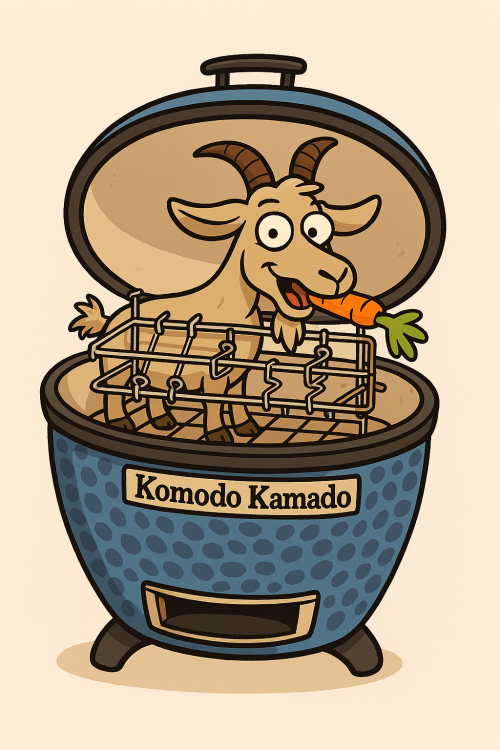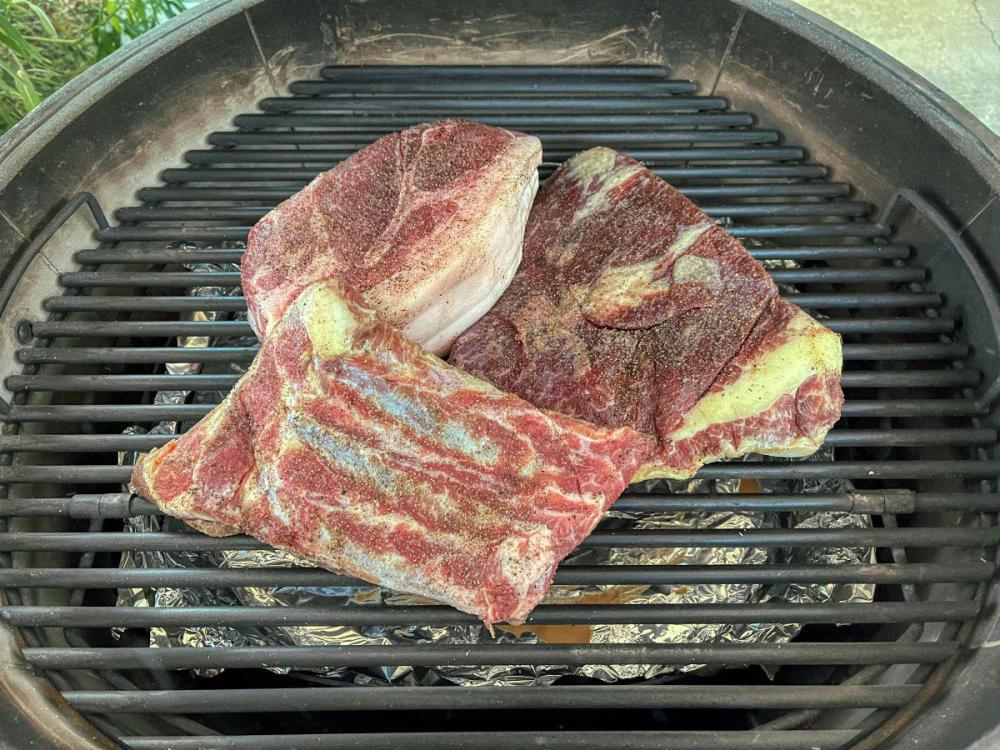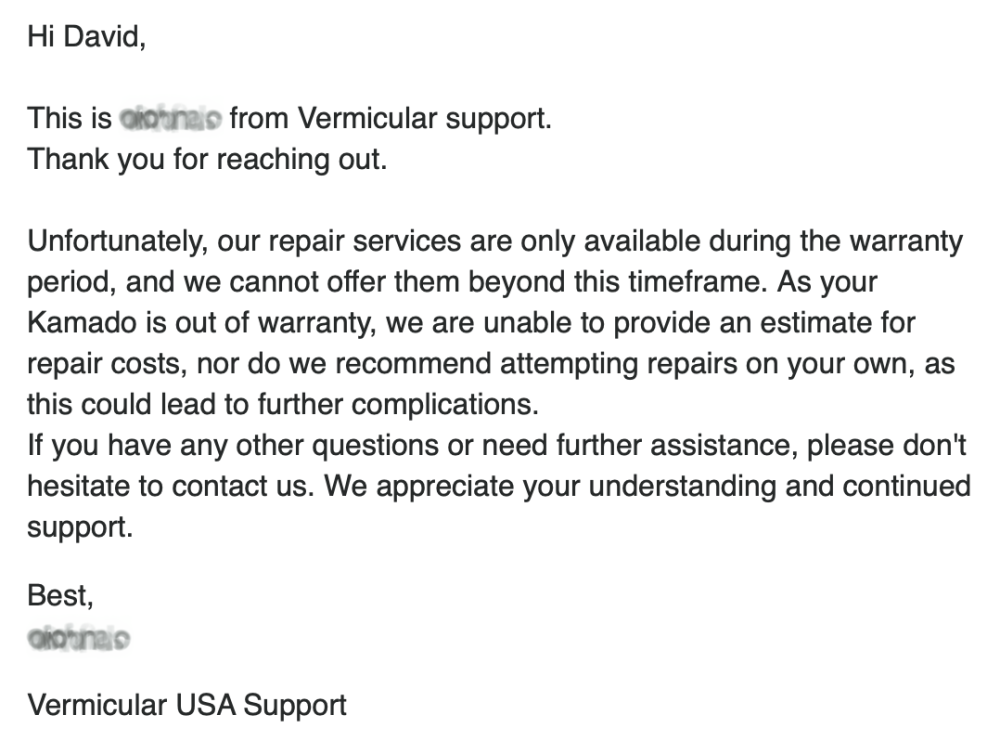-
Posts
1,725 -
Joined
-
Last visited
-
Days Won
50
Syzygies last won the day on June 26
Syzygies had the most liked content!
Reputation
1,619 ExcellentAbout Syzygies
-
Rank
Senior Member

- Birthday 11/29/1955
core_pfieldgroups_99
-
Location
New York, NY and Concord, CA
-
Occupation
Mathematician
Profile Information
-
Gender:
Male
Recent Profile Visitors
The recent visitors block is disabled and is not being shown to other users.
-
Apollo 12 needed to land within walking distance of the Surveyor 3 robotic probe. The moon's lumpy gravity proved a challenge for Apollo 11's landing, so NASA introduced a feedback loop, and nearly landed on top of the Surveyor. The poster child for this cooking debate would be salt. Many people are fiercely proud of portioning salt by eye. Cooking is part theatre, and making a show of pinching salt as a restaurant chef would do is good theatre. We can taste the difference for each 0.1% step of salt by meat or fish weight, and we've never met anyone who can eye salt to this accuracy, so we measure. We like to land within walking distance. A KK with no controller is astonishingly stable, but needs periodic adjustments. Fixed settings determine the geometry of the airflow, and oxygen determines heat production, but this isn't what an engineer calls a stable equilibrium. Open the lid to tend to the meat, and with greater airflow the fire gets hotter. Hotter air generates a greater pressure differential through the fixed geometry of the airflow, which increases the airflow, which sustains a hotter fire. Even if one never opens the lid, nighttime changes in outdoor temperature, and variations in the evolution of the fire, can similarly change the airflow for a fixed opening geometry. This is a mild effect, but every 15 degrees affects the cook. One either embraces these variations as the romance of barbecue, or periodically steers.
-
I'm almost there, but I like to sleep through overnight cooks. One can nail 225 F manually "most of the time" and sleep through the night, but "most of the time" doesn't cut it when 50 people are depending on the result, or the brisket cost $120. I like to measure my pit temp by sticking my probe through the TelTru dome thermometer hole. This is contrary to most advice, but it doesn't matter as long as one is consistent and understands one's cooks. The dome runs hotter till the KK stabilizes, so this yields a more gentle approach to cruising altitude. And I can set 450 F for bread without heat damage to the probe wire. So yes, my lesson has been to not overreach, just use a feedback loop without embarrassment to set my pit temp.
-
I really wish I'd never bought my UltraQ. I've been a BBQ Guru fan since they were the best option, which was apparently long ago. That mechanical dial thingy, then two DigiQs, and now (for some reason, the DigiQs both work) the UltraQ. I love how I can mount the UltraQ on my garage wall, and see the pit temp from far away. One would think I bought the UltraQ so my phone would tell me the pit temp from far away? Even after deleting ShareMyCook and standing right next to the UtraQ, the phone will show stale data while lying about the update time. This is inexcusably stupid. It's not rocket science to handle messages so that one never falsely depends on stale data. I want a warning if my actual data is more than a minute old, not a lie. I should only see that warning when I'm out of bluetooth range. For those of us good at programming computers, it comes as a surprise how well or badly such apps work. My ceiling fan app is unpredictable, from an upscale company. I always thought of Leviton as generic box store stuff, but their smart switches are bomb-proof. One can stand in the garage and manually flip a switch while my wife watches the Leviton phone app in the house, and the new state shows instantly. From this perspective, whomever BBQ Guru hired are the dumb kids in the class. My various AI consoles tell me people think more highly of FireBoard products. The kicker for me was intermittent connectivity for my meat probe, in any UltraQ meat port. AI tells me this could be the probe (out of warranty) or the UltraQ (still under warranty). I just don't have time for this, I'd rather pay top dollar for something that just works. Wireless probes? Huh. For now, given that I'm this close to offering my UltraQ here for $25, I decided that for $25 I'd buy it as a pit temp monitor and fan controller with a nice display. So I'm keeping it, but one further failure and I trash it, move on.
-
Long time 23" Ultimate owner. I've experimented with many approaches to "radiant heat". I wouldn't double the basket splitter. I'm a big fan of the 23" ULTIMATE DOUBLE BOTTOM DRIP PAN. It makes a great heat deflector, and an easy to clean drip pan when lined with foil. (Some people use the drippings for gravy, where the double bottom helps prevent scorching.) I use it as a heat deflector for pizza. Using any ceramic cooker as a pizza oven, one needs to confront the "heat from the bottom" effect. Wood-fired dome pizza ovens don't work this way. The best deflector helps here. Long ago, I'd get several years at a time out of a giant unglazed plant saucer (no lead risk) lined with foil. Again, leave several inches around the outside. The real art to radiant heat is to time the fire's arc. Cook on the return from "low earth orbit" when the fire is waning but the dome remembers.
-
Custom manufacturing has turned being a DIY "maker" on its head. I've personally used SendCutSend, Ponoko, Western Dovetail. My master woodworker neighbor hasn't made a drawer for clients in years; why do! My Venetian Bigolaro came with a handle that couldn't take the stresses of more restrictive pasta dies, so I made my own handle. Same for stainless steel spacers for my Orange-X juicer, or to better seal the interface between our kitchen faucet and sink... My 23" basket splitter is just a couple pieces of flat metal that fit together same logic as some cardboard boxes. I could upload a picture. Me, I'd mock one up in plywood, just don't light it. Be aware that most metals don't belong in a food cooker, so don't improvise: Galvanized metal in particular offgases toxins. There are always metal working shops in town, too. Get a quote. They could be half the price of buying a pizza steel from Baking Steel, at the expense of hours of prep. They were twice the price for my bigolaro handle. Our KK community is experimental, and Dennis has perfected various community good ideas once they get traction.
-

adjustment to my standard 2/1/1 babyback recipe....
Syzygies replied to BARDSLJR's topic in KK Cooking
One can butcher or request "country-style ribs". They are indeed cut from the blade end of the pork loin, near the shoulder, often with generous meat. I used to cut these myself, trial and error after buying bone-in pork loin roasts. I'd always put the bones back in, and eventually it dawned on me... -

I'm looking for a photo of a lamb/goat in a roti cradle.
Syzygies replied to DennisLinkletter's topic in Komodo General
-
A few decades ago I was at a math conference in College Station, Texas, and lead various forays into the town's ok BBQ. On yet another wine buying stop for the courtyard parties at our hotel, I asked if I'd found the best place. I don't It's tough being a New Yorker, while traveling. Paragraphs flit by in one's mind in the pauses between words, elsewhere. It's polite to appear to be paying attention, but that requires focus. eat barbecue Oh gawd! I'm asking the one vegetarian outside Austin! How do I get out of this conversation gracefully? round here! Well then! He sent me to Elgin, Texas. They're known for their hot links, sold in supermarkets across the state, but there were several places selling extraordinary brisket. My own best efforts would be #2, #3, #4 for me, but they were #1. I brought back more on the plane to NYC (causing some commotion) to reheat at the kind of wine tasting I now avoid. They started ordering delivery.
-
How low does your (convection?) oven go? We can all imagine the obvious worst case scenario here, but if you don't bump the knob your house shouldn't burn down. The obvious choice (safer but more work): your KK is an oven. As it cools after a regular cook, use it to dry pellets? I have a KK double bottom drip pan which I use all the time as a heat deflector; on the main rack filled with pellets, once the KK cooled far enough, would be a great drying environment.
-
Huh. I don't doubt your experience, but it's quite different from mine. I'd love to meet you halfway. What KK? What stone? What dome temperature? How long do you let the fire settle, stone heat? I do have a baking steel, but it's dedicated to tortillas; I don't want to mess with its seasoning.
-
I'm a fan of the gas burner assembly. I get the impression that there aren't many of us, but it has its uses. As a general principle, one can take the approach of learning how to use a KK with minimal accessories, and then buying later to meet recognized needs. How one imagines the KK will work rarely corresponds to how one observes that it actually works. It's hard to identify needs in advance, before getting experience. That said, I consider the pizza stone, and the double bottom drip pan, essential equipment. I use the gas burner assembly to get a hot fire going more quickly, for example for pizza. The issue is that one is lighting charcoal from underneath, so the fire wants to burn all at once then go out. This can be mitigated by controlling airflow, and by using large pieces of lump, such as one can buy from Fogo. As Dennis notes, one could turn off the gas but leave the gas burner inserted. I swap it for the regular door. It just feels right to get propane equipment out of the way, though I recognize that there's no actual safety issue here. My approach to pizza is to catch the KK on a downward arc, where the fire is mostly spent but the walls are still radiating a good deal of heat. I don't let the fire go into low earth orbit, because the pizza stone will get too hot, so I control airflow to limit the maximum temperature. On the other hand, the pizza stone needs to get hot enough; this is a balancing act. This is where I consider the double bottom drip pan to be essential; it's the best heat deflector for shielding the pizza stone from the fire below. In a conventional wood-fired pizza oven, the fire is not below. Using a KK, this is a key difference that requires attention. One doesn't want a burnt crust before the top is done. With this approach, I don't care that the fire has been lit from below and wants to burn all at once. My goal is to burn it all at once, within my imposed upper temperature limit.
-
We don't eat hunks of meat as often as we used to; our KK sees most use for chicken, pizza, Focaccia di Recco, bread. I do quick grilling (salsa veggies, taco meat) over a Solo Stove fire pit, the air fryer of the gods. We nevertheless use lots of meat-as-ingredient, and what meat isn't better with smoke? Then there's the Maillard reaction, very special in a KK. Thinning the herd in the chest freezer... The pork butt will become carnitas or tamales filling, the ribs will become a pasta sauce from Rosetta Costantino's My Calabria (we just got back from her food tour), and the brisket will become braised beef for Dan Dan noodles from Robert Delf's The Good Food of Szechuan.
-
Beautiful! Back in the shallow end of the swimming pool, I'm also fond of guerrilla woodworking. At our daughter's previous house in Salem, Oregon, working outside in her carport next to pouring rain with minimal tools, watching the wood warp in real time as I worked. I rejected dado cut joints in favor of explicit shelf supports I could clamp the shelves onto, taking out cupping as I screwed them in. Back went on last. Serviceable, and they made the move to her new house in Arizona.
-

Vermicular Cast Iron Induction Cooker
Syzygies replied to PVPAUL's topic in Relevant Product Reviews
We love our Vermicular Musui Kamado, and use it frequently. Also, as part of the cohort that can afford a Komodo Kamado, we did not blink at buying a new Vermicular Kamado (base) after our original touch display failed after four years. They may be Japanese, but they're not Toyota. Anyone who is on the fence over price needs to accept that the $340 (USD) Kamado base is potentially a purchase every three years. If someone's reaction is "screw them!" I understand. While I can be dispassionate enough to repurchase the base, I'm also fairly pissed off that they didn't at least volunteer a technical description of what is typically wrong, and what they'd do under warranty. Although, my own experience is that they replace rather than repair. While I appreciated the new unit, this is how we're destroying the planet. -
I asked my wife, who belongs to a Greek Orthodox church. Her immediate answer: They overcook it. My advice would be heretical: Sous vide for a long time at a rather rare target temperature, then grill on the KK to get a nice exterior. That's my go-to for any meat better served rare than "low and slow" trad BBQ.
- 1 reply
-
- 1
-











